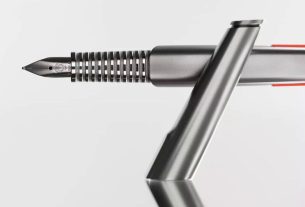President Biden’s plan to forgive up to $20,000 in student loan debt for 40 million Americans is stalled—ensnared in conservative legal challenges that could block debt relief for months, or even for good.
But the Department of Education has launched a separate program that could reduce the student loan burden for up to 3.6 million borrowers—and forgive the loans of more than 40,000 Americans.
This initiative was rolled out earlier this year to rectify lenders’ practice of steering borrowers away from programs that could eventually forgiven their student loan debt. It will affect far fewer borrowers than Biden’s student loan forgiveness program, but it could help some of those most in need of debt relief—including people who went into low-paying fields or public service work after college.
Here’s what to know about the student loan review that the Education Department is conducting, and how to know if you might qualify.
What is the new student loan review program?
The new program focuses on borrowers whose loans were put into forbearance. Forbearance pauses monthly student loan payments, but those loans still accrue interest, starkly increasing the amount borrowers owe.
An NPR investigation showed that nearly 5.5 million borrowers spent three years in forbearance even though alternatives like income-driven repayment (IDR)―which use borrowers’ monthly income and family size to dictate student loan payment plans―were available because loan servicers did not enroll or inform people about these other options. Most borrowers under IDR are eligible for forgiveness after 20 or 25 years of payments depending on the type of degree.
Another often-overlooked option for some new graduates is Public Service Loan Forgiveness (PSLF)―a program that forgives student loan debt after 120 qualifying payments for certain nonprofit and government employees.
Announced in April, the one-time account adjustment is part of the Department of Education’s plan to end loan servicers’ practice of putting borrowers in forbearance unnecessarily. Opting for forbearance can set borrowers back years in paying off their student loans.
What does it mean for borrowers?
The Education Department’s review is important because borrowers in an income-driven repayment plan could have their student debt forgiven after making 20 to 25 years of repayments.
The new account adjustment will automatically review borrower’s loan payment histories to add more months towards their payment count, even if they are not currently enrolled in an income-driven repayment plan.
Under the revision, the Department of Education will give borrower’s credit for partial and late payments, as well as payments made under previously ineligible loan types or payment plans.
Borrowers who have had 12 consecutive or 36 cumulative months in forbearance will also have that time added to their payment tally.
Borrowers who applied for PSLF before the end of October 2022 are also eligible for a loan discharge if their time spent in forbearance or deferment reaches the 120 payments required for the program.
Other borrowers, who have not reached the threshold for full forgiveness, can expect to see payment count changes by July 2023.
Borrowers can call their servicers to verify whether they are currently enrolled in income-based repayment, or eligible for it—but no action needs to be taken for borrowers to receive the account adjustment as long as they have a direct loan, meaning their loan is managed by the Department of Education.
Borrowers with federal loans held by commercial lenders thus need to consolidate their loans by May 1 to be eligible for this adjustment.
You can logon to studentaid.gov to check who your loan servicer is.
What about other student loan forgiveness efforts?
In August, the Biden administration announced their student loan debt relief plan, which sought to forgive $10,000 in federal student debt for most borrowers, and up to $20,000 for recipients of Pell Grants.
But the program was paused due to legal challenges by six Republican-led states, stalling more than 40 million borrowers from receiving aid. Of those 40 million, nearly 20 million would have wiped their debt clean.
For now, the future of this initiative remains up in the air as the lawsuit is set to go before the Supreme Court in 2023.
Borrowers are set to resume student loan payments starting next year. The Department of Education extended the student loan pause to 60 days after the Department is allowed to implement Biden’s student loan relief program, or litigation around the initiative is resolved. If this does not happen by June 30, 2023, payments will begin in August.
“Callous efforts to block student debt relief in the courts have caused tremendous financial uncertainty for millions of borrowers who cannot set their family budgets or even plan for the holidays without a clear picture of their student debt obligations,” said U.S. Secretary of Education Miguel Cardona. “I want borrowers to know that the Biden-Harris Administration has their backs and we’re as committed as ever to fighting to deliver essential student debt relief to tens of millions of Americans.”
More Must-Reads From TIME



